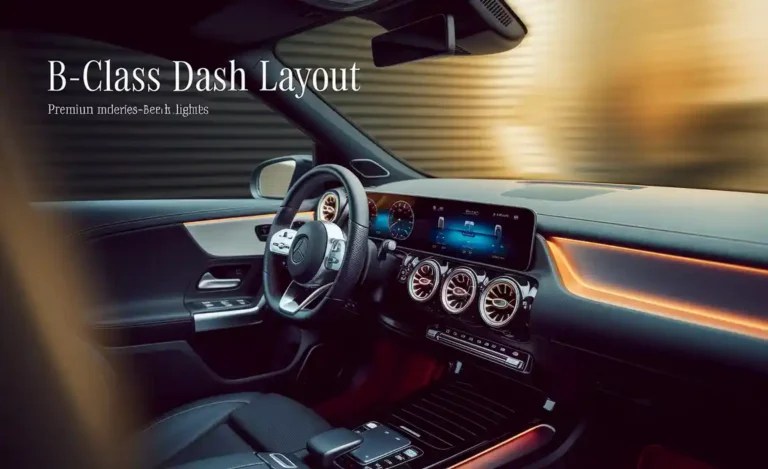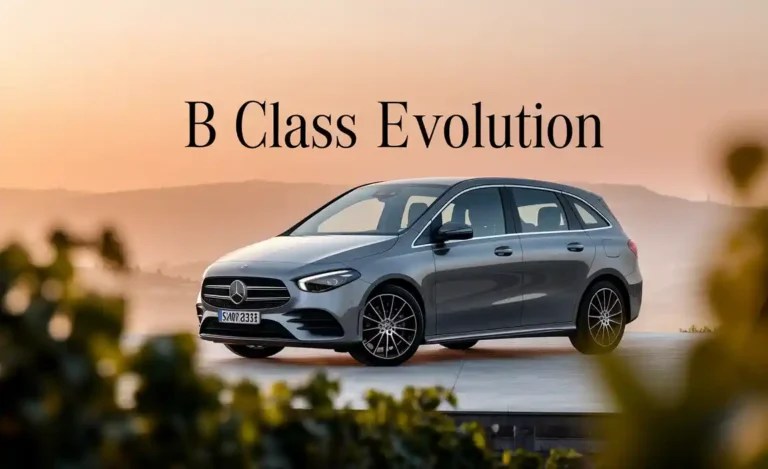B Class FAQ: Your Ultimate Guide
The Mercedes-Benz B-Class is a versatile compact car known for its practicality, spacious interior, and premium feel. This guide answers common questions to help you understand its features, maintenance, and ownership.
Welcome to the world of the Mercedes-Benz B-Class! If you’ve recently acquired one or are considering it, you might have a few questions. This often happens with sophisticated vehicles; you want to make sure you understand them perfectly.
We’re here to demystify the B-Class experience. This guide will cover everything you need to know, from its unique design to essential care. Let’s dive in and get you feeling confident about your B-Class.
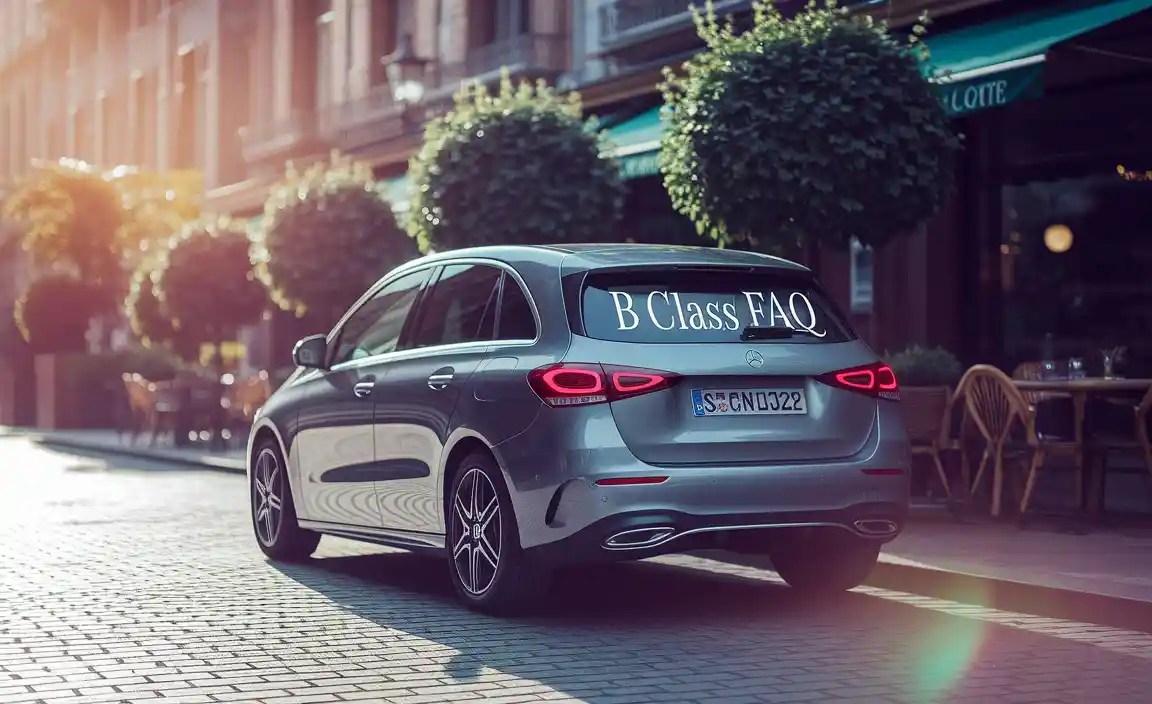
Understanding the Mercedes-Benz B-Class
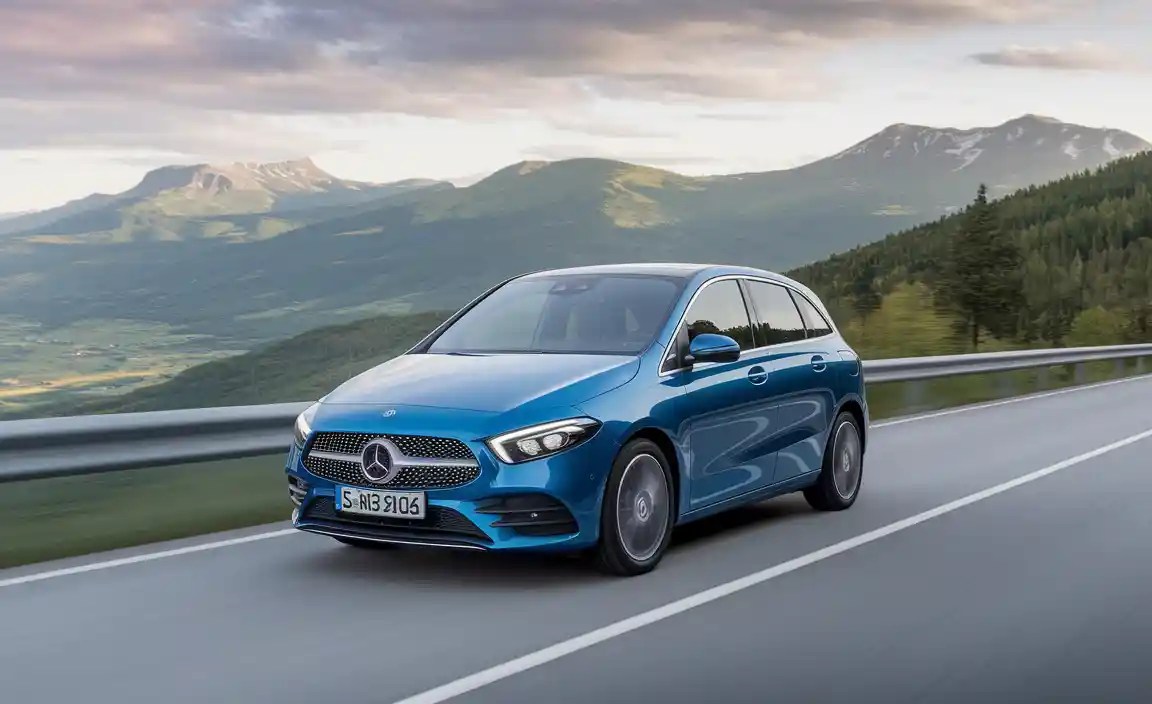
The B-Class is a unique offering in the Mercedes-Benz lineup. It’s often described as a compact luxury sports tourer, blending the elevated driving position and practicality often associated with MPVs (Multi-Purpose Vehicles) with the refined aesthetics and driving dynamics Mercedes-Benz is renowned for. This combination makes it a versatile choice for individuals and small families alike, offering a premium experience in a more compact and accessible package.
Key Characteristics of the B-Class
The B-Class stands out for several reasons:
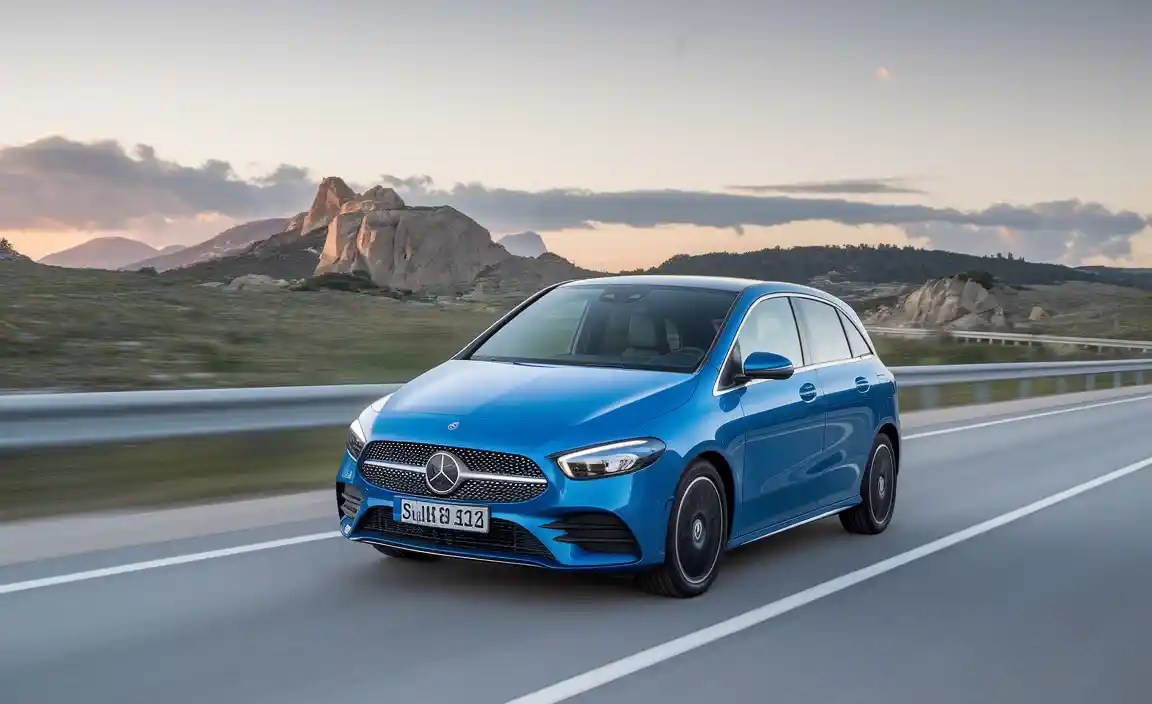
- Spacious Interior: Despite its compact exterior dimensions, the B-Class is designed to maximize interior space. It offers comfortable seating for five passengers and a generous cargo area, making it incredibly practical for daily commutes, grocery runs, and weekend getaways.
- Elevated Driving Position: Unlike traditional hatchbacks, the B-Class provides a slightly higher seating position. This offers better visibility of the road ahead and can make getting in and out of the vehicle easier, contributing to its overall user-friendliness.
- Premium Mercedes-Benz Quality: As with all Mercedes-Benz vehicles, the B-Class benefits from high-quality materials, meticulous craftsmanship, and advanced technology. You’ll find thoughtful design touches and a refined driving experience that sets it apart from competitors.
- Efficient Performance: The B-Class is typically offered with a range of efficient yet capable engines. Whether you opt for a petrol or diesel variant, or even one of the electric or plug-in hybrid options in certain markets, you can expect a balance of performance and fuel economy.
- Advanced Safety and Technology: Mercedes-Benz consistently equips its vehicles with cutting-edge safety features and infotainment systems, and the B-Class is no exception. Expect a suite of driver assistance systems and the intuitive MBUX (Mercedes-Benz User Experience) infotainment system.
Navigating B-Class Specifications and Trims
Understanding the different specifications and available trims can help you choose the right B-Class for your needs or better appreciate the one you own. While Mercedes-Benz models are highly customizable, certain core configurations and features are common across generations.
General Model Designations
Mercedes-Benz uses a letter designation system to broadly categorize its vehicles. The ‘B’ signifies a compact executive car with a focus on practicality and interior space, often referred to as a Sports Tourer.
Engine and Drivetrain Variants
The B-Class has been offered with a variety of engine and drivetrain configurations. Here’s a simplified overview of typical designations:
Petrol Engines:
- B 180/B 200: Typically signifying engines with around 1.3-liter to 1.6-liter displacement, offering a balance of economy and performance for everyday use.
- B 250/B 260: Often feature larger displacement or more powerful versions of the petrol engines, providing a sportier feel.
Diesel Engines:
- B 180 d/B 200 d: These designations usually indicate efficient diesel engines, favored for their fuel economy and torque, especially popular in European markets.
- B 220 d/B 250 d: More powerful diesel variants offering enhanced performance and towing capacity if applicable.
Hybrid/Electric:
- B 250 e: In earlier generations, this may have indicated a plug-in hybrid model.
- EQA: While not technically a “B-Class,” the fully electric EQA SUV often shares its platform and some powertrains with the B-Class generation it debuted alongside, and offers a similar practical advantage in an electric format.
Drivetrain Options:
- FWD (Front-Wheel Drive): Standard on most entry-level B-Class models for optimal efficiency and packaging.
- 4MATIC (All-Wheel Drive): An optional feature on higher-performance or certain diesel variants, providing enhanced traction and stability in various driving conditions.
Transmission Types
Most modern B-Class models utilize advanced automatic transmissions:
- 7G-DCT / 8G-DCT: These are dual-clutch automatic transmissions that offer rapid gear changes and excellent efficiency, contributing to the car’s refined driving experience.
- Manual Transmission: Earlier generations or specific entry-level models might have featured a manual gearbox, though automatics are now dominant.
Key B-Class Features to Look For
When considering a B-Class, especially on the used market or when customizing a new one, several features enhance its appeal and functionality.
Impressive Interior Versatility
The B-Class is almost unrivaled in its class for interior flexibility. Features like:
- Sliding Rear Seats: Allow you to adjust the balance between passenger legroom and cargo space.
- Fold-Flat Rear Seats: Create a nearly level load floor, turning the B-Class into a compact cargo hauler.
- Numerous Storage Compartments: Thoughtful cubbies and bins throughout the cabin keep essentials organized.
Infotainment and Connectivity
Mercedes-Benz’s MBUX system is a standout feature:
- Intuitive Touchscreen: The central display is easy to navigate.
- Voice Control: Powered by AI, “Hey Mercedes” understands natural language commands for navigation, climate, and media.
- Smartphone Integration: Apple CarPlay and Android Auto are standard on most recent models, seamlessly connecting your phone for calls, messages, music, and apps.
Learn more about the advancements in Mercedes-Benz infotainment systems on official Mercedes-Benz resources, such as their technology pages.
Driver Assistance Systems
Safety is paramount. Many B-Class models come equipped with:
- Active Brake Assist: Can help to prevent or mitigate collisions by automatically applying the brakes if a potential hazard is detected.
- Active Lane Keeping Assist: Can subtly steer you back into your lane if you unintentionally drift across lane markings.
- Blind Spot Assist: Warns you of vehicles in your blind spots when changing lanes.
- Adaptive Cruise Control (DISTRONIC): Maintains a set speed and distance from the vehicle ahead.
The availability of these systems can depend heavily on the specific model year and optional packages chosen. For a comprehensive understanding of available safety features, referring to the official Mercedes-Benz safety brochures is a good practice.
Maintaining Your B-Class for Longevity
Proper care ensures your B-Class continues to perform and feel like a new car. Here’s a breakdown of essential maintenance practices:
Scheduled Servicing: The Foundation of Care
Mercedes-Benz vehicles, including the B-Class, operate on a flexible service interval system known as ASSYST. The car’s onboard computer monitors various driving parameters to calculate when the next service is due. Generally, this means:
- Minor Service (Service A): Typically includes an oil change, oil filter replacement, tire rotation, a check of fluid levels, and a comprehensive inspection of vehicle components.
- Major Service (Service B): Encompasses all the items from Service A, plus additional checks and replacements such as brake fluid, cabin air filter, and potentially spark plugs or other wear items depending on mileage.
The exact interval will be displayed on your dashboard. It’s crucial to adhere to these recommendations. You can find detailed service requirements in your vehicle’s owner’s manual or by consulting a Mercedes-Benz service advisor.
Fluid Checks and Replacements
Beyond the routine oil changes, several other fluids are vital:
- Brake Fluid: Should be replaced periodically, as its hygroscopic nature (absorbing moisture) can degrade braking performance. A typical interval is every two years.
- Coolant: The engine coolant needs to be flushed and replaced to maintain its anti-corrosion and anti-freeze properties.
- Transmission Fluid: While modern automatic transmissions are often sealed for life, some manufacturers recommend fluid changes at higher mileages (e.g., 60,000-100,000 miles) to ensure longevity, especially for dual-clutch transmissions like the 7G-DCT/8G-DCT. Consult your manual or a specialist.
Tire Care is Crucial
Proper tire maintenance impacts safety, fuel economy, and ride comfort:
- Tire Pressure: Always maintain the recommended tire pressures, usually found on a sticker in the driver’s side doorjamb. Inaccurate pressures can lead to uneven wear and affect handling.
- Tire Rotation: Regular rotation (every 5,000-7,500 miles) helps ensure even wear across all four tires, extending their lifespan.
- Wheel Alignment: If you notice uneven tire wear, or if the vehicle pulls to one side, a wheel alignment check is recommended.
For more information on tire maintenance best practices, resources from organizations like the National Highway Traffic Safety Administration (NHTSA) offer valuable guidance.
Brake System Inspection
Your braking system is a critical safety component. Regular inspections should include:
- Brake Pad and Rotor Wear: Visual checks for thickness and condition.
- Brake Fluid Level and Condition: Ensuring it’s at the correct level and free from contamination.
- Brake Line Integrity: Checking for leaks or damage.
Beyond the Basics: DIY vs. Professional Service
While many owners prefer professional service at an authorized dealership or a qualified Mercedes-Benz specialist, some basic maintenance tasks can be undertaken by the DIY enthusiast. These might include:
- Checking and topping up windshield washer fluid.
- Inspecting and cleaning air filters (engine and cabin).
- Basic tire pressure checks.
For anything more complex, such as engine diagnostics, transmission work, or intricate electronic systems, entrusting your B-Class to trained Mercedes-Benz technicians is usually the most prudent approach. They have specialized tools and knowledge to maintain the vehicle’s sophisticated systems.
Driving Dynamics and Performance
The B-Class is engineered to deliver a comfortable and confident driving experience, blending the practicality of a compact car with Mercedes-Benz’s signature refinement. While its primary focus isn’t outright sportiness, it offers a satisfying journey for daily driving and longer trips.
Ride Comfort and Suspension
Mercedes-Benz typically tunes the B-Class suspension for a compliant ride. This means it effectively absorbs road imperfections, providing a smooth and comfortable experience for occupants, even on less-than-perfect road surfaces. The elevated driving position also contributes to a sense of command and visibility.
Handling and Agility
Despite its focus on comfort, the B-Class handles with competence. Its steering is generally precise, and the chassis is well-balanced, providing a secure feeling when cornering. While it might not exhibit the sharp, sporty feel of a C-Class or an A-Class AMG, it offers more than enough agility for everyday driving situations, including navigating city streets and winding country roads with ease. Front-wheel drive is standard on most models, with 4MATIC all-wheel drive available on select variants for enhanced grip.
Engine Performance and Efficiency
The range of engines offered in the B-Class is designed to balance performance with fuel economy. Smaller displacement petrol and diesel engines provide adequate power for most situations, delivering good responsiveness for acceleration and overtaking. For those seeking a more dynamic experience, higher-output engine options are typically available. The efficient dual-clutch automatic transmissions also contribute to smooth power delivery and optimal fuel efficiency.
For example, a typical B 200 petrol model might offer around 160-163 horsepower, providing a comfortable surge of power for merging onto highways. A B 200 d diesel variant, on the other hand, often provides strong low-end torque, making it feel particularly responsive in urban driving and very economical on longer journeys.
Enhancing Your B-Class Ownership Experience
Beyond regular maintenance and understanding its core features, there are ways to enhance your enjoyment and utility of the B-Class.
Accessorizing Your B-Class
Mercedes-Benz offers a range of official accessories designed to complement the B-Class:
- Roof Racks and Carriers: For transporting larger items like bicycles, skis, or luggage, increasing the car’s utility.
- All-Weather Floor Mats: Designed to protect the interior carpet from dirt, mud, and spills; highly recommended for families or those in wetter climates.
- Interior Trim Upgrades: Personalize the look and feel of your cabin with different materials and finishes.
- Upgraded Infotainment/Navigation Modules: Certain older models might be eligible for hardware or software upgrades that bring newer functionalities.
Always ensure any accessories are genuine Mercedes-Benz parts or from reputable aftermarket suppliers to maintain compatibility and quality.
Driving Modes and Customization
Many B-Class models feature selectable driving modes (e.g., ECO, Comfort, Sport). These modes alter throttle response, transmission shift points, and steering feel to suit your driving preferences or conditions. Experimenting with these can help you find the perfect balance for your daily commute or a spirited drive. Some models also allow for further customization
Frequently Asked Questions
1. What is the main advantage of the B-Class over other Mercedes-Benz models?
The primary advantage of the B-Class is its exceptional blend of compact exterior size and surprisingly spacious interior utility. It offers greater practicality and cargo volume than a traditional compact car like the A-Class, while still delivering the premium Mercedes-Benz experience, often at a more accessible price point. Its elevated seating position also enhances visibility and ease of entry/exit.
2. How does the B-Class differ from the A-Class?
While closely related and sharing many components, the B-Class is fundamentally a more practical and versatile vehicle. The A-Class is a sportier hatchback with a lower profile, designed with a more dynamic aesthetic. The B-Class features a more upright stance, a longer wheelbase, and a “sandwich” floor construction (in earlier generations) that allows for greater interior volume and a higher seating position, prioritising space and comfort over outright sportiness.
3. What are the typical engine options for the Mercedes-Benz B-Class?
Engine options vary by generation and market. Typically, you’ll find efficient four-cylinder petrol engines (e.g., B 180, B 200) and diesel engines (e.g., B 180 d, B 200 d). More recent models have also introduced plug-in hybrid (e.g., B 250 e) and even fully electric variants (like the EQA, which shares its platform and many characteristics with the B-Class). Performance-oriented models may share powertrains with the A-Class.
4. Is the B-Class suitable for families?
Yes, the B-Class is an excellent choice for small to medium-sized families. Its spacious seating, ample boot space, and ease of ingress and egress make it practical for daily family duties. The higher seating position also offers a commanding view, which many drivers find reassuring, especially when navigating busy traffic or parking.
5. What kind of technology can I expect in a B-Class?
Depending on the model year and trim level, B-Class vehicles are equipped with advanced Mercedes-Benz technology. This includes the MBUX infotainment system with features like voice control (“Hey Mercedes”), touchscreen functionality, and smartphone integration. Safety systems can range from basic essentials to advanced driver assistance features like Active Brake Assist, Lane Keeping Assist, and Blind Spot Assist.
6. How do I maintain my B-Class?
Routine maintenance is crucial for any Mercedes-Benz. This typically involves scheduled oil changes, filter replacements, brake checks, and tire rotations. The B-Class usually follows Mercedes-Benz’s ASSYST service interval system, which informs you when specific maintenance is due. It’s highly recommended to follow the manufacturer’s service schedule, either by visiting an authorized Mercedes-Benz service center or a reputable independent specialist.
7. What is the driving experience like in a B-Class?
The driving experience in a B-Class is characterized by comfort, refinement, and ease of use. It offers a smooth ride, with suspension tuned to absorb imperfections in the road. While not as overtly sporty as some other Mercedes models, it handles confidently and provides a pleasant, relaxed driving environment, making it ideal for both urban driving and longer journeys.


